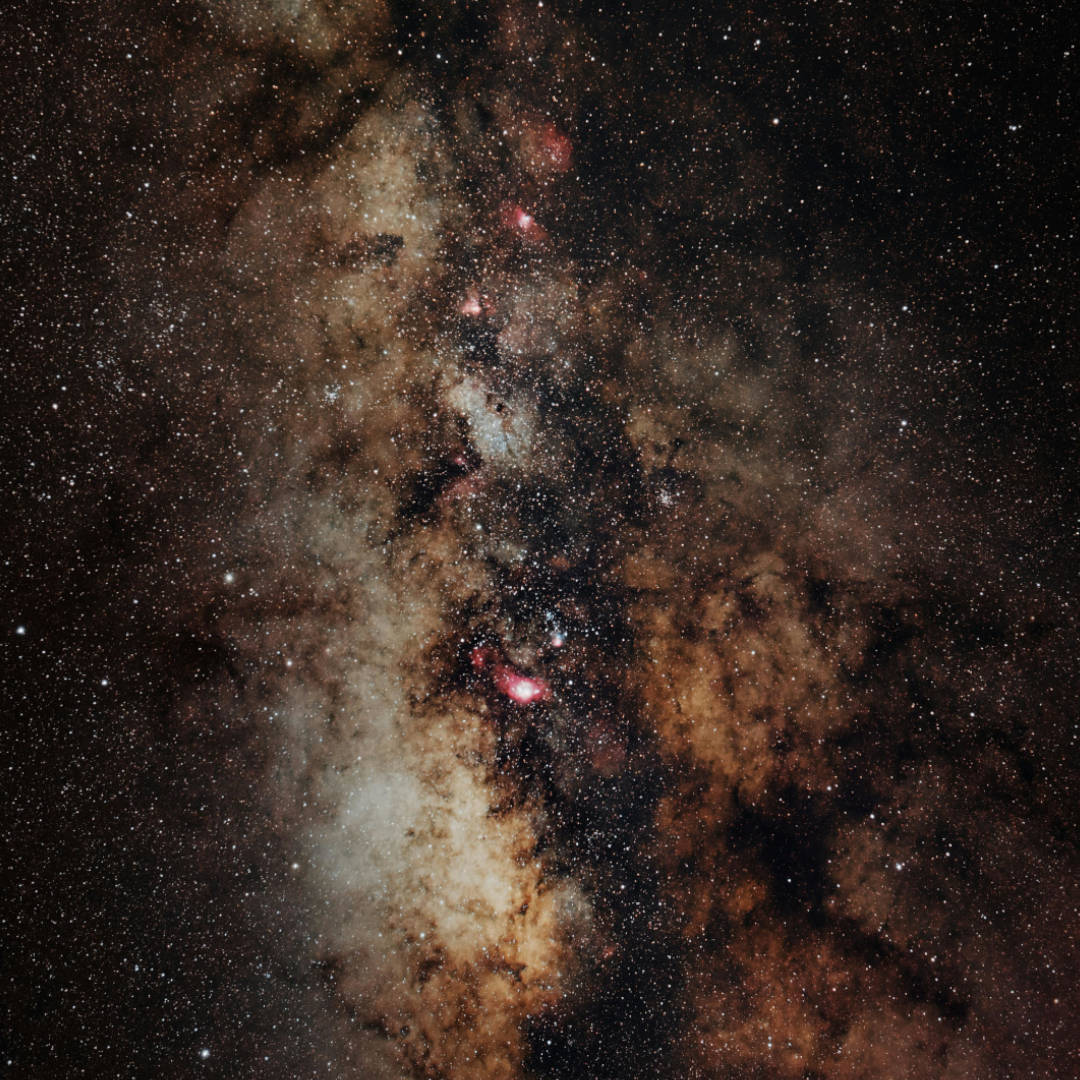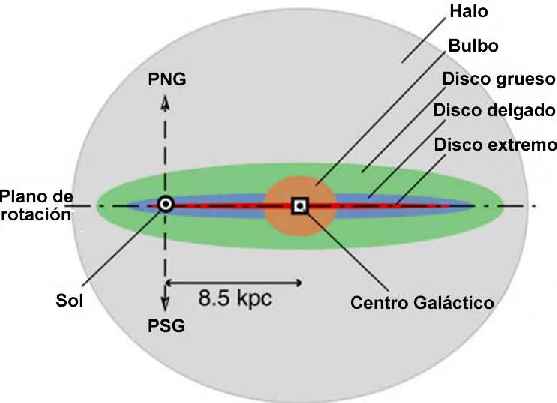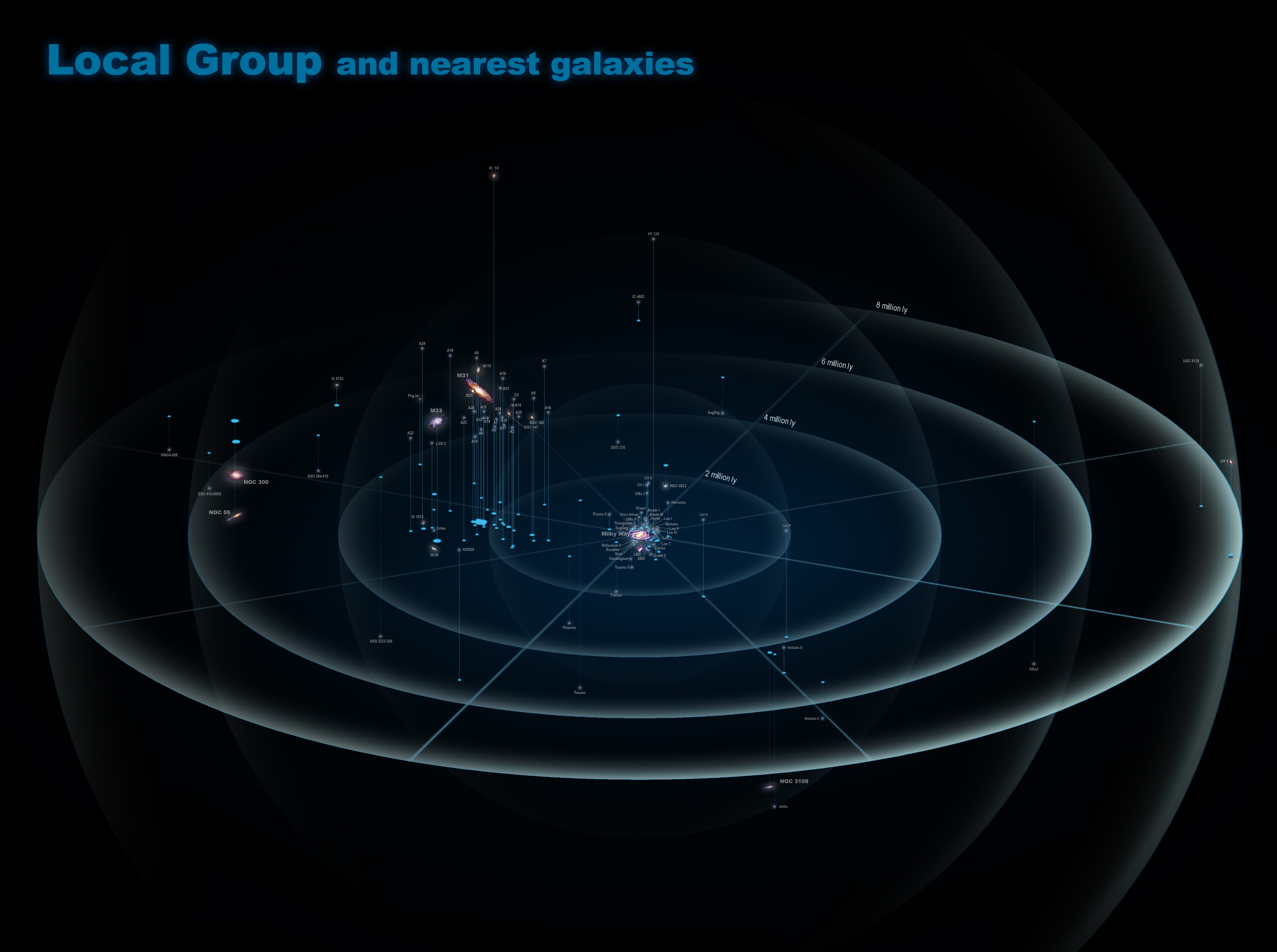
The Milky Way, our home in the Universe
When we look at the night sky away from the city’s lights, we often see a band of tenuous and whitish light crossing the celestial vault. This band is, in fact, the plane of our galaxy, the Milky Way. While every star we see in heaven, regardless of the direction, it is part of it, this spectacular band of light is the view of the dense and populated region of stars, gas and galactic dust.
Main image: Ahmad Basem
What is the Milky Way?
The Milky Way is our galaxy, a barred spiral with a central bulb in the form of a bar and spiral arms that contain between 100 and 400 billion stars, billion planets, gas clouds, dust and dark matter, which represents much of its mass of 1.5 billion solar masses.
Its diameter is about 100,000 light years, with a thickness of 1,000 light years in the arms. The Solar System, located in the Orion arm to 27,000 light years of the center, orbits the nucleus, where the Sagittarius A* Supermasive hole resides (4 million solar masses).
Surrounded by a halo with globular clusters, it is part of the local group and will merge with Andromeda in 4.5 billion years. From the earth, it appears as a brilliant band in dark skies, and its study reveals keys on galactic evolution and the search for life.

Map of the Milky Way. Credit: NASA/JPL-Caltech/ESO/R. Hurt – http://www.eso.org/public/images/eso1339e/
Structure
Disco: This is the most visible part and the one we see in the night sky. The disc is a flat and thin structure that contains most of the stars of the galaxy, including the youngest, as well as the interstellar gas and dust. Here are spiral arms, which are regions of greater density where star formation is more active.
The central bulb: in the heart of the galaxy is the bulb, a spherical region and densely populated with stars. These stars are usually much older than those of the album. In its center, there is a supermassive black hole known as Sagittarius A*, with a mass equivalent to millions of soles.
The galactic halo: the halo is a spherical and diffuse structure that surrounds the entire disc and the bulb. It is mainly composed of globular clusters (groups of hundreds of thousands of very old stars) and dispersed individual stars. It is believed that the halo contains most of the dark matter of the galaxy, a mysterious substance that does not emit light but exerts a strong gravitational attraction. The halo extends far beyond the album, with a diameter of about 300,000 light years.
Spiral arms: spiral arms are the “star highways” of the galaxy. Although they are difficult to see from our position, we know that the Milky Way has four main arms: Norma, Perseus, Sagittarius and Centaur. Our solar system lies in the Orion arm, a minor or spur arm between Perseus and Sagittarius.

Diagram of the galactic structure. Image credit: https://upload.wikimedia.org/wikipedia/commons/d/dd/Galaxia.jpg
How was the Milky Way?
The Milky Way formed more than 13 billion years ago from clouds of gas and dark matter that collapsed by force of gravity.
In its beginnings, it was a much smaller galaxy. He grew up and became bigger by “cannibalizing” other dwarf galaxies that collided with her, such as the Gaia-Oncemed Galaxy about 10 billion years ago.
With time, gas and dust flattened to form the galactic disc and spiral arms that we see today. The central bulb and the galactic halo are the oldest parts of the Milky Way, formed from the first stars and the remains of those cosmic collisions.
Currently, the Milky Way continues to interact with smaller galaxies around it. These galaxies, known as satellite galaxies, orbit the Milky Way for its immense gravitational force, similar to how the orbit the Earth.
The most famous are the clouds of Magallanes (large and small), visible from the southern hemisphere. However, astronomers have discovered dozens of smaller and faint satellite galaxies. It is believed that some of these galaxies will be eventually absorbed by the Milky Way in the future, thus continuing the process of growth and galactic “cannibalism” that marked its formation.

Image of the Large Magellanic Cloud, satellite galaxy. Image credit: By CTIO/NOIRLab/NSF/AURA/SMASH/D. Nidever (Montana State University)Acknowledgment: Image processing: Travis Rector (University of Alaska Anchorage), Mahdi Zamani & Davide de Martin – https://noirlab.edu/public/images/noirlab2030a/, CC BY 4.0, https://commons.wikimedia.org/w/index.php?curid=97808005
Our location on the Mily Way
Our location is away from the bustling galactic center.
We are in the arm of Orion, one of the secondary spiral arms of this barrada spiral galaxy, about 27,000 light years from the nucleus, where Sagittarius A* resides to. This position places us approximately halfway between the center and the edge of the galaxy.
From our perspective, immersed inside the galactic disc, the Milky Way appears as a bright band in the night sky, brighter in directions towards the galactic plane, where most stars, gas and interstellar powder are concentrated. This band varies in intensity depending on where we look, being more dim to the edges and denser towards the center, although our horizon is partially obscured by clouds of dust.
We orbit the galactic center about 828,000 km/h, completing one lap every 225-250 million years, on a continuous trip within this vast cosmic structure that contains between 100 and 400 billion stars and billion planets.

Position of our galaxy in the Local Group. Author: Antonio Ciccolella
Orion arm characteristics
The Orion arm is estimated that it has about 10,000 light years long and a thickness of approximately 3,000 light years.
Unlike the main arms, which are regions of high star density, the Orion arm is less dense, which makes it less prominent in the maps of the galaxy. However, inside there are numerous young stars, stellar and nebulae clusters, indicating that it is an active star formation zone.
Orion’s arm is famous for hosting some of the best known and beautiful star formations of the night sky. For example, in it is the gould belt, a band of bright stars that has an inclination of about 18 to 20 degrees with respect to the galactic plane, and that it is believed to be a recent star formation region.
It also houses the famous Orion Nebula (M42), one of the brightest nebulae and a stellar nursery very studied by astronomers. Despite being a minor arm, Orion’s arm is a fascinating and full cosmic place. It is, after all, our galactic home.

Detailed artist’s impression of the structure of the Milky Way, showing the Orion Arm and nearby regions. Author: Phobos92
The future of our Milky Way
The Milky Way is not alone in the Universe. It is part of a group of galaxies called the local group, which includes the Andromeda Galaxy, our largest and most close neighbor. Currently, the Milky Way and Andromeda are approaching one to the other about 110 kilometers per second.
Within about 4.5 billion years, these two galaxies will collide. It will not be a catastrophic event for individual stars, since the distances between them are enormous, but it will lead to the formation of a new and gigantic elliptical galaxy that astronomers have called Lactomeda.
The Milky Way is a wonder of nature, a reminder of our little, but significant, existence in the immense cosmos. The next time you see that band of light in the sky, remember that you are looking at the heart of your galactic home.

 Español
Español
